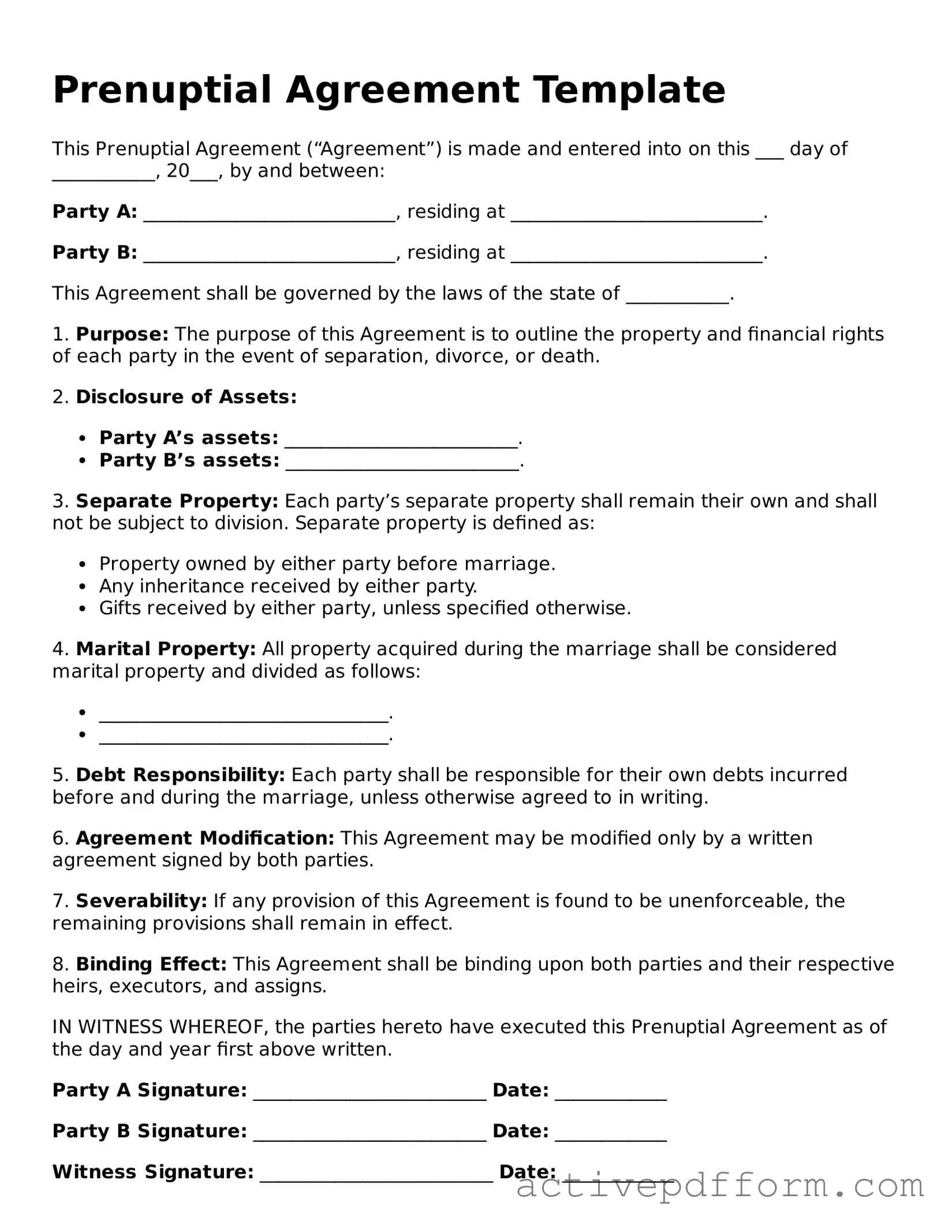Prenuptial Agreement Template
This Prenuptial Agreement (“Agreement”) is made and entered into on this ___ day of ___________, 20___, by and between:
Party A: ___________________________, residing at ___________________________.
Party B: ___________________________, residing at ___________________________.
This Agreement shall be governed by the laws of the state of ___________.
1. Purpose: The purpose of this Agreement is to outline the property and financial rights of each party in the event of separation, divorce, or death.
2. Disclosure of Assets:
- Party A’s assets: _________________________.
- Party B’s assets: _________________________.
3. Separate Property: Each party’s separate property shall remain their own and shall not be subject to division. Separate property is defined as:
- Property owned by either party before marriage.
- Any inheritance received by either party.
- Gifts received by either party, unless specified otherwise.
4. Marital Property: All property acquired during the marriage shall be considered marital property and divided as follows:
- _______________________________.
- _______________________________.
5. Debt Responsibility: Each party shall be responsible for their own debts incurred before and during the marriage, unless otherwise agreed to in writing.
6. Agreement Modification: This Agreement may be modified only by a written agreement signed by both parties.
7. Severability: If any provision of this Agreement is found to be unenforceable, the remaining provisions shall remain in effect.
8. Binding Effect: This Agreement shall be binding upon both parties and their respective heirs, executors, and assigns.
IN WITNESS WHEREOF, the parties hereto have executed this Prenuptial Agreement as of the day and year first above written.
Party A Signature: _________________________ Date: ____________
Party B Signature: _________________________ Date: ____________
Witness Signature: _________________________ Date: ____________
Witness Signature: _________________________ Date: ____________
